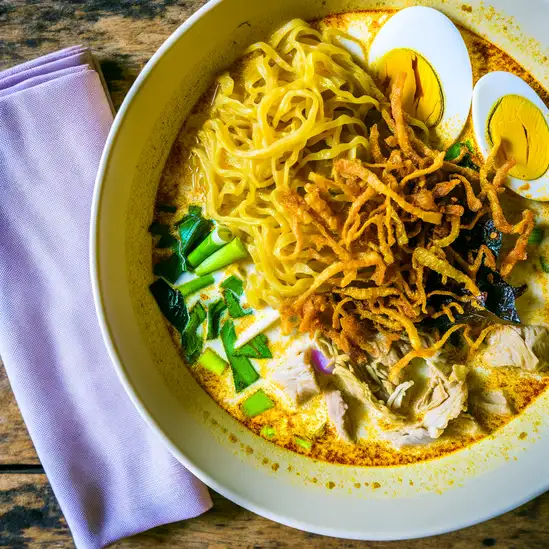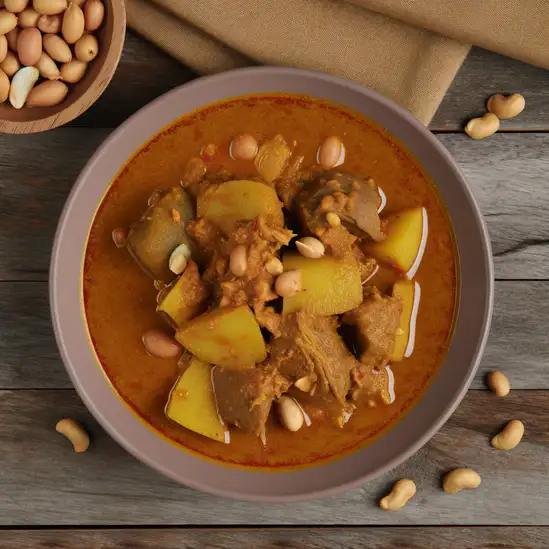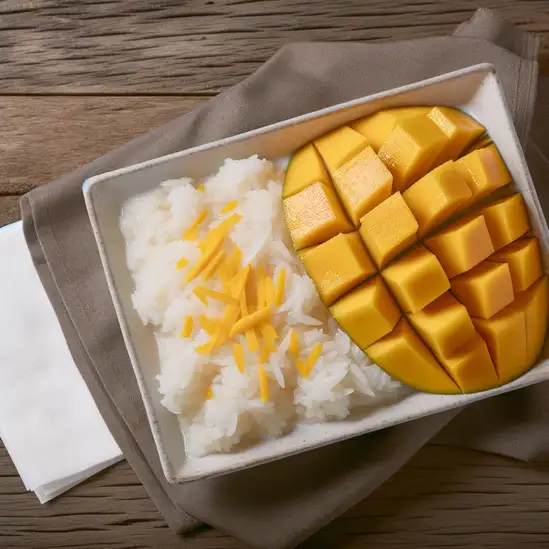



If you’re dreaming of a place where turquoise waves gently kiss powdery white beaches,Amphoe Ko Samui is that kind of paradise that feels like a warm embrace the moment you arrive. The island hums with a laid-back energy—think swaying palm trees,the distant chatter of friendly locals,and the soft clinking of glasses at beachside bars as the sun dips below the horizon. It’s not just a beach destination; it’s a vibrant tapestry of culture and nature woven together in the most inviting way. Walking through the bustling markets,you’ll catch the spicy aroma of freshly grilled seafood mingling with the sweet scent of tropical fruits. The streets are alive with colorful stalls selling everything from handwoven fabrics to fragrant jasmine garlands. There’s a rhythm here,a blend of traditional Thai warmth and a relaxed island vibe that makes you want to slow down and savor every moment. Whether you’re sipping on a coconut straight from the shell or tasting the fiery kick of a local curry,your senses are in for a treat. What really sets Ko Samui apart is its balance—lush jungles and hidden waterfalls just a short ride from lively beach parties and serene temples. It’s a place where you can start your day with a peaceful meditation overlooking the sea and end it dancing under the stars. Trust me,once you’ve felt the island’s gentle pulse,you’ll find yourself already planning your next visit before you even leave.
The information on this page is currently being reviewed by Tripkliq and should be used as a guide only
Eng word: Hello
Eng pronunciation: sah-wah-dee
Local language: สวัสดี
Eng word: Goodbye
Eng pronunciation: lah-gon
Local language: ลาก่อน
Eng word: Thank you
Eng pronunciation: khawp-khun
Local language: ขอบคุณ
Eng word: How much
Eng pronunciation: tao-rai
Local language: เท่าไหร่
Eng word: Toilet
Eng pronunciation: hong-nam
Local language: ห้องน้ำ
Eng word: Help me
Eng pronunciation: chuay-duay
Local language: ช่วยด้วย
Eng word: Yes
Eng pronunciation: chai
Local language: ใช่
Eng word: No
Eng pronunciation: mai
Local language: ไม่
Eng word: Excuse me
Eng pronunciation: kaw-toht
Local language: ขอโทษ
Ko Samui was inhabited by fishermen from the Malay Peninsula and southern China around the 5th century, marking the establishment of its first community.
The introduction of coconut plantations in the 19th century significantly influenced Ko Samui’s economy and landscape, making coconuts one of the island's main exports.
During World War II, Ko Samui served as a safe haven and a landing spot for the Thai Navy, which adds a significant historical note to its peaceful past.
Nathon, the old capital of Ko Samui, was once a major trading port between China, Indonesia, and the Middle East, reflecting the island’s historical significance in regional trade.
In the late 19th century, Hainanese migrants settled in Ko Samui, bringing with them their culinary and cultural practices, which have since become part of the island’s rich heritage.
The Magic Buddha Garden, hidden in the hills of Ko Samui, was created in 1976 by a local fruit farmer named Nim Thongsuk, showcasing the island’s spiritual and artistic heritage.
Ko Samui evolved from a self-sufficient, isolated community into one of Thailand’s premier tourist destinations in the 20th century, with its first resort opening in the early 1970s.
The construction of Ko Samui’s first road was completed in the 1970s, connecting various parts of the island and significantly boosting its economy and accessibility.
Designated in the 1980s, the Ang Thong National Marine Park near Ko Samui is a protected area of more than 40 islands, celebrated for its natural beauty and biodiversity.
In Amphoe Ko Samui, the most common Power Adaptor is Type A, Type C, Type O.







A Northern Thai coconut curry noodle soup topped with crispy noodles, often served with chicken or beef.

A spicy and sour shrimp soup made with fresh herbs, lemongrass, kaffir lime leaves, and chili.

Stir-fried rice noodles with shrimp or chicken, eggs, bean sprouts, and peanuts, often served with lime and chili.

A spicy green papaya salad mixed with lime, fish sauce, peanuts, and chili, offering a refreshing crunch.

A rich and mildly spicy curry made with beef or chicken, potatoes, peanuts, and coconut milk, influenced by Indian cuisine.

A popular dessert made with sweet sticky rice, fresh mango slices, and drizzled with coconut milk.

Grilled fish coated in salt and served with a spicy dipping sauce, showcasing the fresh seafood of the region.
Imagine stepping into a place where the air hums with the gentle rhythm of waves lapping against sun-warmed shores,and the scent of salty sea mingles with fragrant street food stalls. That’s Phuket for you—a vibrant island that feels alive in every sense. It’s not just the stunning beaches that grab you,but the way the island pulses with a laid-back energy,where colorful markets buzz with chatter and the aroma of grilled seafood fills the air. Walking through the old town,you’ll find charming Sino-Portuguese buildings painted in pastel hues,their shutters creaking softly in the tropical breeze,while tuk-tuks zip by,adding a playful soundtrack to your explorations.
Phuket’s character is a beautiful blend of tradition and liveliness. Temples with golden spires peek out from lush greenery,inviting quiet moments of reflection,while nearby,night markets burst with life—vendors calling out,sizzling woks,and the sweet tang of mango sticky rice tempting your taste buds. The island’s culture is warm and welcoming,with locals who smile easily and share stories over cups of strong Thai coffee or fresh coconut water.
What makes Phuket truly special is how it wraps you in its embrace—whether you’re watching a fiery sunset from a cliffside bar,diving into crystal-clear waters teeming with vibrant marine life,or simply savoring the spicy kick of a freshly made curry. It’s a place that invites you to slow down,soak in the colors,sounds,and flavors,and leave with a heart full of unforgettable moments.
If you find yourself wandering into Amphoe Mueang Krabi,get ready to be wrapped in a warm embrace of nature and culture that feels both vibrant and soothing. The moment you step into this lively district,the salty tang of the Andaman Sea mingles with the sweet scent of tropical flowers,setting a scene that’s as refreshing as it is inviting. The streets buzz gently with the chatter of locals and the clinking of street food stalls,where the aroma of grilled seafood and spicy herbs teases your senses and promises a feast.
What makes Mueang Krabi truly special is how effortlessly it balances its laid-back island charm with a pulse of authentic Thai life. You’ll find yourself wandering through bustling markets filled with colorful fruits,handmade crafts,and the friendly smiles of vendors eager to share stories. The rhythm of daily life here is unhurried but alive,with monks in saffron robes gliding past ancient temples,and fishermen hauling in their catch against a backdrop of limestone cliffs that rise dramatically from the turquoise waters.
Spend your days exploring hidden coves or kayaking through mangrove forests,and your evenings savoring fresh seafood at a beachside shack while the sun dips low,painting the sky in fiery hues. There’s a genuine warmth in the air—both from the tropical sun and the people—that makes you feel like you’re not just visiting,but truly belonging. Mueang Krabi isn’t just a place to see; it’s a place to feel,taste,and remember long after you’ve left.
Bangkok is one of those cities that grabs you the moment you step out into its bustling streets. There’s this electric energy in the air—a mix of honking tuk-tuks,sizzling street food stalls,and the chatter of locals weaving through markets. The city feels alive,like it’s constantly moving and breathing,yet somehow it balances this chaos with moments of serene beauty,like the golden spires of temples catching the afternoon sun or quiet canals reflecting the sky.
Walking through Bangkok,you’ll be hit by a whirlwind of scents:fragrant jasmine from flower vendors,the sharp tang of lemongrass and chili from street carts,and the sweet aroma of mango sticky rice tempting you at every corner. The colors are just as vivid—neon signs flicker alongside traditional wooden shophouses,and monks in saffron robes glide past modern skyscrapers. It’s a city where old and new dance together effortlessly.
What really makes Bangkok special is its warmth and openness. The people here have a genuine kindness that shines through,whether you’re bargaining at Chatuchak Market or sharing a laugh over a bowl of spicy boat noodles. The culture is rich and layered,from the intricate rituals at Wat Pho to the lively festivals that light up the streets. Visiting Bangkok feels like stepping into a story that’s still unfolding,full of surprises and moments that stay with you long after you leave.
If you’re thinking about Pattaya,imagine a place where the energy hums like the waves crashing along its shores,but with a laid-back twist that invites you to slow down and soak it all in. The city pulses with life—colorful markets buzz with chatter and the scent of grilled seafood mingles with salty sea air. As you stroll along the beach,the warm sun kisses your skin while the distant laughter of children and the rhythmic beat of live music from nearby bars create a soundtrack that feels both vibrant and welcoming.
What really makes Pattaya stand out is its blend of contrasts. You’ll find sleek,modern high-rises standing shoulder to shoulder with humble street vendors selling fresh mango sticky rice or spicy papaya salad. The city’s character is a lively mix of local Thai culture and international influences,making it a melting pot where you can dive into traditional temples one moment and then explore quirky art galleries or bustling night markets the next.
Don’t miss the chance to experience the city’s unique charm at sunset—head to a rooftop bar or the beach itself,where the sky explodes in shades of pink and orange,and the air cools just enough to make you want to linger. Pattaya isn’t just a place to visit; it’s a place to feel alive,to taste new flavors,hear new stories,and create your own unforgettable memories.
If you find yourself wandering into Amphoe Mueang Chiang Mai,it’s like stepping into a lively tapestry woven with ancient charm and modern buzz. The moment you stroll through its old city walls,you’re greeted by the gentle hum of scooters weaving past centuries-old temples,the scent of incense mingling with sizzling street food. There’s a rhythm here that feels both peaceful and vibrant,like the city is breathing stories through its narrow lanes and bustling markets.
What really makes Chiang Mai special is how it balances tradition and creativity. You can watch monks in saffron robes collecting alms at dawn,then spend the afternoon sipping rich,locally grown coffee in a hip café filled with art and laughter. The night markets are a sensory feast—bright lanterns flicker overhead,vendors call out with friendly smiles,and the air is thick with the aroma of grilled meats,spicy papaya salad,and sweet mango sticky rice. It’s a place where every corner invites you to slow down and savor the moment.
Beyond the city’s pulse,the surrounding mountains cradle a cooler breeze and lush greenery,offering a refreshing escape from the tropical heat. But it’s the warmth of the people—their genuine smiles and easy hospitality—that truly stays with you. Chiang Mai isn’t just a destination; it’s a feeling,a place where history,culture,and everyday life blend into an unforgettable experience that keeps you coming back for more.
If you’re dreaming of a place where the sea breeze carries the scent of salt and jasmine,Hua Hin is where you want to be. This coastal town has a laid-back charm that feels both timeless and refreshingly alive. Imagine waking up to the gentle sound of waves lapping against the shore,then wandering through bustling markets where the air is thick with the aroma of grilled seafood and sweet mango sticky rice. Hua Hin isn’t just a beach town; it’s a place where tradition and modern life blend effortlessly.
Strolling along the long,sandy beach,you’ll see families flying kites,fishermen hauling in their catch,and couples sipping iced coffee at cozy beachfront cafés. The town’s character shines through its vibrant night markets,where colorful lanterns hang overhead and the chatter of locals mixes with the sizzling of street food stalls. There’s a warmth here—not just from the tropical sun,but from the genuine smiles of the people who call Hua Hin home.
What really sets Hua Hin apart is its balance. You can explore ancient temples and royal palaces,then dive into lively art galleries or unwind at a spa that feels like a secret sanctuary. Whether you’re savoring fresh seafood by the water or cycling through lush vineyards nearby,Hua Hin invites you to slow down,breathe deeply,and soak in a rhythm that’s uniquely its own.
Tourists are presented with inflated bills at bars or clubs, often including items they did not order.
Tourists are approached by individuals claiming to represent charities, but the money goes to the scammer.
Scammers posing as police officers demand on-the-spot fines for fabricated offenses.
Tourists are sold fake or subpar tour packages that do not deliver the promised experience or services.
Tourists are persuaded to buy overpriced or fake gemstones as 'investment opportunities.'
Tourists rent jet skis and are later accused of causing damage, with demands for large sums of money to cover repairs.
Tourists rent motorbikes and are charged for pre-existing damages or accused of losing parts like helmets.
Drivers refuse to use meters and charge exorbitant prices for short distances.
Thieves target tourists in crowded areas or on motorbikes, stealing bags, wallets, or phones.
Tourists are lured into attending high-pressure sales presentations for timeshares that are overpriced or have hidden fees.
Thailand has very strict drug laws, and this includes Amphoe Ko Samui. The possession, use, and trafficking of illegal drugs can result in severe penalties, including long prison sentences and even the death penalty for serious offenses. Even small quantities of drugs can lead to significant legal trouble. Tourists should avoid any involvement with illegal drugs.
In Amphoe Ko Samui, Thailand, smoking is regulated by national laws. Smoking is prohibited in indoor public places, workplaces, and public transport. Additionally, smoking is banned in certain outdoor areas such as beaches, parks, and markets. Violators can face fines. Tourists should look for designated smoking areas and be mindful of no-smoking signs.
Vaping is heavily restricted in Thailand, including Amphoe Ko Samui. The import, sale, and possession of e-cigarettes and vaping equipment are illegal. Tourists caught with vaping devices can face hefty fines and even imprisonment. It is strongly advised not to bring any vaping products into the country.
What are other people saying about Amphoe Ko Samui?
Recent Social posts about Amphoe Ko Samui
There is nothing to show you for now.